Sim-racing is a discipline that originated many years ago with enthusiasts who wanted to experience even more thrills at the wheel of real racing cars in digital format. These enthusiasts have collaborated in the creation of numerous brands, such as Logitech, Thrustmaster, Fanatec, etc., big names in the world of simulation in general.
Like many other players in the game, Thrustmaster was founded long before the 2000s, in 1990 to be precise. Although the brand has been around for over 30 years, it’s certainly not the oldest in the business. If you come across a gamer at a trade show or anywhere else and you’re talking about simulator peripherals, Thrustmaster is the first brand that comes to mind, and that says a lot about this manufacturer.
In sim-racing, we have different players focusing on different market segments. For example, Simucube and Fanatec are at the top end of the market. Logitech mainly targets “budget-friendly” configurations, even if their recent products are beginning to show a certain willingness to titillate the big names. As for Thrustmaster, it’s a brand that’s very popular in sim-racing. Everyone loves it, and that’s unlikely to change.
Today I’m going to tell you about the history of Thrustmaster, how it managed to seduce so many sim-racers and what its flagship products are.
Thrustmaster product ranges
Thrustmaster offers its fans a wide range of sim-racing products. However, their categorization is a little odd in my opinion. Certainly, Thrustmaster ‘s products are divided into 3 main categories, namely Principale, Sparco and Ferrari, for entry-level, mid-range and high-end. That’s for the flagship products. But in the manufacturer’s catalog, you’ll find other products that don’t fit into these 3 ranges, and are more often than not specific. And that’s why I find the Thrustmaster catalog a bit bizarre, and very easy to get lost in, even for a connoisseur of the discipline.
Main range
At Thrustmaster, this range represents the gateway to the world of sim-racing peripherals. This range is characterized by products that are affordable, almost unbeatable in terms of price, of fairly good quality and, above all, delivered in bundles for the most part.
The main range is by far Thrustmaster ‘s most popular for the reasons I’ve just mentioned, but also because it focuses on consoles. To be honest, if you have a PS4, Xbox One or the latest, you’re certainly not going to shell out more than €200 or €300 for a sim-racing setup, and Thrustmaster has exactly what you need in this price bracket.
In fact, console sim racers prefer Thrustmaster products for their attractive price and compatibility with Sony and Microsoft machines. It doesn’t make sense to spend €1,500 on a steering wheel and base to play Need For Speed, at least that’s what I think.
The Sparco range
Racing fans know that Sparco is an automotive equipment manufacturer. The brand manufactures steering wheels, seats, gear knobs, etc., and has partnered with Thrustmaster to create sim-racing peripherals specifically geared towards rallying. Truth be told, you’re not limited to rally sims, but these products have been designed with that in mind.
Sparco products are Thrustmaster‘s mid-range, with prices that are, again, unbeatable in the segment. Quality is much better than entry-level products, and the emphasis is on feel and sensation. If you’re looking to get into sim-racing without breaking the bank, this is the range to aim for from Thrustmaster.
The Ferrari range
The Ferrari range was created thanks to a partnership with the iconic car manufacturer. Here again, you have a number of products that are replicas of racing Ferrari steering wheels, making them excellent peripherals for sim-racing, especially if you’re a purist of the prancing horse marque.
Thrustmaster ‘s Ferrari products are numerous, with different price points. You can have, for example, a TS-PC Racer Ferrari 488 Challenge base and steering wheel for around €600, and a Thrustmaster Ferrari 599XX EVO steering wheel for €250. But these are still top-of-the-range products, with excellent materials and build quality.
Thrustmaster steering wheels
I’ll now move on to the subject you’re most interested in, Thrustmaster steering wheels. The strength of this brand lies in its vast catalog of products. There’s something for every taste, and above all every price, even if they won’t necessarily titillate the game’s big bosses like Fanatec.
In what follows, I’m going to give you an overview of the steering wheels I consider the best in each Thrustmaster range, giving you their advantages, disadvantages, price, etc. I’m not going to give you a buying guide with several options, but only on products with excellent value for money.
The Thrustmaster T300 RS

Advantages :
- Excellent comeback for the range
- Good build quality
- Quick Release
Disadvantages :
- Use of some rather cheap materials
I’m talking about a bundle (steering wheel, base and pedals) from Thrustmaster’s main range that I consider to be excellent, the T300 RS. It’s a complete wheel with all the peripherals you need for sim-racing on PC or Sony consoles. Unfortunately, this wheel is not compatible with Microsoft consoles, as it is officially licensed by Sony. That’s a shame, but it’s not the end of the world.
Build quality is excellent. The whole wheel structure is made of metal, and the cover is made of textured rubber. It’s a bit cheap, but for the price (around €350) you can’t expect too much, especially with a complete bundle.
The base of the T300 RS features an industrial Brushless motor for excellent feel and sensation. Several sensors are integrated into the flywheel to give a perfect reading of the rider’s inputs and react accordingly. There’s nothing better in this segment. Another positive point is that this base incorporates a Quick Release system for using another manufacturer’s wheel.
All in all, the T300 RS is an excellent wheel for beginners or sim-racing enthusiasts. You also have an excellent product that doesn’t really fit into any range, the Thrustmaster T-GT II (discover it by clicking here), but it’s almost twice as expensive as the T300 RS, and I wouldn’t necessarily recommend it if you’re just starting out in sim-racing.
Read my full review of the Thrustmaster T300 RS.
The Thrustmaster Competition Wheel SPARCO P310

Advantages :
- Powerful force feedback
- Premium manufacturing quality
- Official Sparco steering wheel replica
Disadvantages :
- Without Quick Release
Thrustmaster’s Sparco range is vast, with many products, and I find the Competition Wheel SPARCO P310 to be the best, at least in terms of value for money.
The design is simply sublime. The steering wheel is 31 cm in diameter, and has been developed in close collaboration with Sparco to be an exact replica of one of the OEM’s steering wheels. The shape won’t please everyone, but I personally like it. You’ve got the metal wheel structure and a black suede leather covering of excellent quality, which would make other manufacturers’ high-end steering wheels envious. I have to say that Thrustmaster has pulled out all the stops on this wheel.
The controls are located on a kind of hub at the rear of the wheel, and the paddles are of very good quality, in brushed aluminum. Honestly, shifting feel is excellent, even for a mid-range steering wheel.
The base motor is a brushless with 40 Watts of power. This is correct, and it provides good sensations with good force feedback too. In addition, there’s a cooling system to keep the motor in optimum temperature conditions, so you can enjoy many hours of sim-racing.
Let’s talk about platform compatibility. This steering wheel and its base are compatible with PC, Playstation and Xbox, making it an excellent sim-racing peripheral for all gamers. As far as I’m concerned, this is an excellent steering wheel from the brand for around 160 euros.
The TS-PC Racer Ferrari 488 Challenge
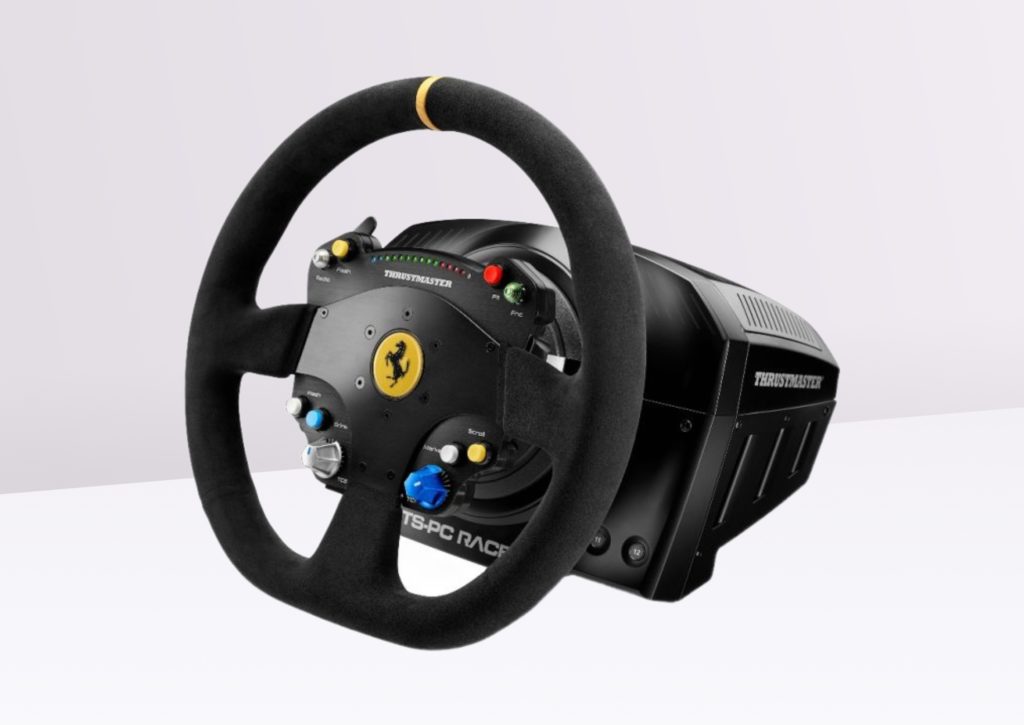
Advantages :
- Official Ferrari license
- Powerful, responsive force feedback
Disadvantages :
- Premium prices
- Supplied without crankset
I’ll end with an excellent Ferrari-licensed steering wheel from Thrustmaster, the TS-PC Racer Ferrari 488 Challenge. I’ll say it now: this isn’t the most expensive wheel in the Thrustmaster range, as many of the manufacturer’s products don’t really have a range, like the T-GT 2 at over €700.
Like the Sparco we’ve just seen, the TS-PC Racer Ferrari 488 Challenge features a rear hub with all buttons and paddles. The wheel structure is made of metal with Alcantara all around, giving it a nice premium touch. I love it, anyway.
On the hub, you’ll find a RevLED, two paddles and a host of buttons for menu navigation and vehicle settings. The base is the TS-PC with a 40-watt motor, just like many Sparco motors. The feel is good, as is the force feedback. What’s more, you have good motor cooling technology to keep it running smoothly for many hours.
The grip on this steering wheel is perfect. The wheel is 32 cm in diameter, a little big, but it’s round with a flat bottom. This allows it to be used in many sim-racing games, and I love it. The only drawback is that it comes without a pedal board. We’ve become accustomed to Thrustmaster sim-racing products with all peripherals, and that’s a bit of a shame.
Personally, I love this steering wheel, and recommend it to amateur sim racers and fans of the discipline. When you use it, you won’t be put off by its shape or its grip.
Read my full review of the Thrustmaster TS-PC Racer.
The history of Thrustmaster
It all began in 1990 when the Thrustmaster company was founded by American engineers from a variety of professions. The brand is American, and its members, at the time, were part of the army, navy and NASA. It has to be said that founding a company with people from these organizations is a recipe for success, and it was.
The company’s aim at the time – and it hasn’t really changed nowadays – was to offer simulation peripherals to help pilots, in particular, train better with their aircraft. Just like racing pilots, pilots of airliners and fighter jets spend hundreds of hours in simulation to hone their skills, and they needed top-quality peripherals that could reproduce 100% of what the aircraft felt like.
But as you well know, the world of simulation hasn’t stopped with the professionals, and has crossed over to the general public with numerous games. Today, this discipline is very popular with gamers, especially sim-racing. Throughout the world, Thrustmaster is a brand that is highly appreciated by its public for the products it offers in its segment. I’ll say it right away: Thrustmaster is not a high-end brand, or even a very high-end brand. This segment is virtually dominated by Fanatec, which has been in the game for 25 years. Thrustmaster targets the entry and mid-range with excellent quality products.
The last point on the company’s history is its acquisition in 1999 by the French group Guillemot Corporation. In reality, the group bought the gaming peripherals division, not the entire company.
Thrustmaster’s approach to peripherals
Sim-racing is a universe unto itself, with players and a fanbase all over the world. Many brands offer products exclusively for sim-racing, such as Fanatec. Thrustmaster ‘s approach is different: instead of targeting one segment of the market, the brand offers several gaming peripherals to reach as many fans as possible.
Like Fanatec, Thrustmaster offers its customers not only sim-racing peripherals, but also flight simulation peripherals, controllers and accessories, all of which run on the various platforms, namely PC and consoles.
It’s a unique approach, but one that works well for the brand. Instead of focusing on a single segment, Thrustmaster tries to reach out to all simulation enthusiasts, whether racing or flying, in addition to offering other peripherals for game players. This has made the brand we all know today famous and highly regarded. Even if you’re not a sim-racing enthusiast, you know that Thrustmaster is a manufacturer of high-quality peripherals, appreciated by everyone. The brand has managed to establish itself in the minds of gamers the world over, and I respect it for that.
How did the Thrustmaster brand become so popular among simulation fans?
Instead of aiming high and offering products for a specific clientele, Thrustmaster has taken a different approach to seducing its buyers. To put it simply, the brand has put everything into the quality-price ratio of its products, and this has paid off. Today, even if Fanatec is the best sim-racing brand in my opinion, Thrustmaster is still the king of value for money, especially if you shop in its mid-range range.
By offering high-quality products at very attractive prices, you encourage players to come and shop with you, even if you’re a more generalist brand. It’s exactly the same with cars: Volkswagen is a generalist brand, but it achieves far more sales than BMW, for example, which is an elitist, more premium brand. The trick is to offer peripherals that are sufficiently premium, of good quality and that work well. This has worked for Thrustmaster , and will certainly continue to do so.
Another point to consider, and one that has greatly helped Thrustmaster’ s rise to the top of the sim-racing brands, is its approach to bundles. Thrustmaster is well known for selling many of its products in bundles, with steering wheel, base and pedals. And even if you go upmarket, you’ll always get the steering wheel and its base. For sim-racing enthusiasts, this is a big plus, especially for those who are new to the discipline and don’t quite know where to start with their setup.
Basically, you get devices that work well together and are delivered as a package. This approach is very different from that of Fanatec, for example, which is all about customizing peripherals. Of course, you can, for example, have a different Thrustmaster base and steering wheel that work perfectly well together. But on the bulk of the range, you have bundles. This makes the choice easier for sim-racers, especially those who are not hardcore in the discipline.
Thrustmaster and its vision of bundles
As I mentioned earlier, Thrustmaster is rather generalist when compared to other brands such as Fanatec or Simucube. In absolute terms, this isn’t a bad thing, and I even think it’s a good thing.
Instead of focusing on a single segment of the sim-racing market, Thrustmaster tries to reach as many customers as possible, mainly with products that combine good quality with excellent value. I’m not going to lie to you: Thrustmaster reigns supreme in this segment.
The brand’s vision is to offer bundles at very attractive prices. These bundles typically consist of a steering wheel and a base, and sometimes, depending on the range, a pedalboard. Logitech is also doing the same, focusing on bundles to appeal to the widest possible audience.
The thing is, it works. You see, if you offer a complete set in the same box, potential customers won’t look elsewhere. When I started out in sim-racing, I started with Thrustmaster for the simple reason that the bundles were attractively priced and included steering wheel, base and pedals. Of course, the quality is nowhere near Fanatec‘s, and neither is the price. The two brands are in two different segments of the sim-racing market.
The Thrustmaster ecosystem
So, let’s talk about the Thrustmaster ecosystem. Like all the big names in simulation or sim-racing, Thrustmaster has its own ecosystem for all its peripherals. These work superbly together, whatever the range you choose.
Like many other brands, Thrustmaster peripherals all connect to each other, via the base, using a single USB plug. This is simply perfect, worthy of the market leaders. And as well as having a single USB socket used by the peripherals, you can also configure them using Thrustmaster‘s software. You’ll be able to make adjustments to steering wheels, gearshifts, pedals, bases, etc. – in short, all the manufacturer’s products.
Also, all Thrustmaster products work very well together, so you won’t have any compatibility problems, because it’s the same ecosystem. It’s the same as with Fanatec, where you can, for example, have a Podium base with a CSL pedalboard and a ClubSport steering wheel, and everything will work perfectly. At Thrustmaster, it’s the same thing.
Which one to choose?
- Budget. The steering wheel is chosen according to your budget, just like any other sim-racing peripheral. The good thing about most Thrustmaster products is that they are sold as a bundle with steering wheel, base and pedals. So you can spend a few hundred euros on your setup.
- Immersion. Depending on the range, you can have a good degree of immersion. If you want to do some amateur sim-racing every weekend, I’d recommend Thrustmaster’s main range. If you want an excellent feel and more immersion, there are the Sparco and Ferrari ranges for that.
- Availability. Thrustmaster is a very popular brand, and you’ll find its products in stores, supermarkets and online. This means you can try them out before you buy, which is a big plus compared with the competition.
- Compatibility. In this respect, much of the Thrustmaster range is compatible on consoles, and all their products are compatible on PC. However, bear in mind that some peripherals, such as the T-GT 2 steering wheel, are only compatible with Playstation and PC consoles.
- Ergonomics. Almost all Thrustmaster steering wheels are easy to handle, with the exception of those specially designed for F1 or GT3. You just have to choose one to suit your tastes.
Conclusion
In over 30 years of existence, Thrustmaster has established itself in the game of consumer sim-racing peripherals. The brand’s reputation is built on its high-quality products and affordable prices compared to the competition. On top of this, Thrustmaster’s after-sales service is also very good, which brings a certain peace of mind when shopping with this manufacturer.
This brand is one of the best in its segment, and I highly recommend its products.

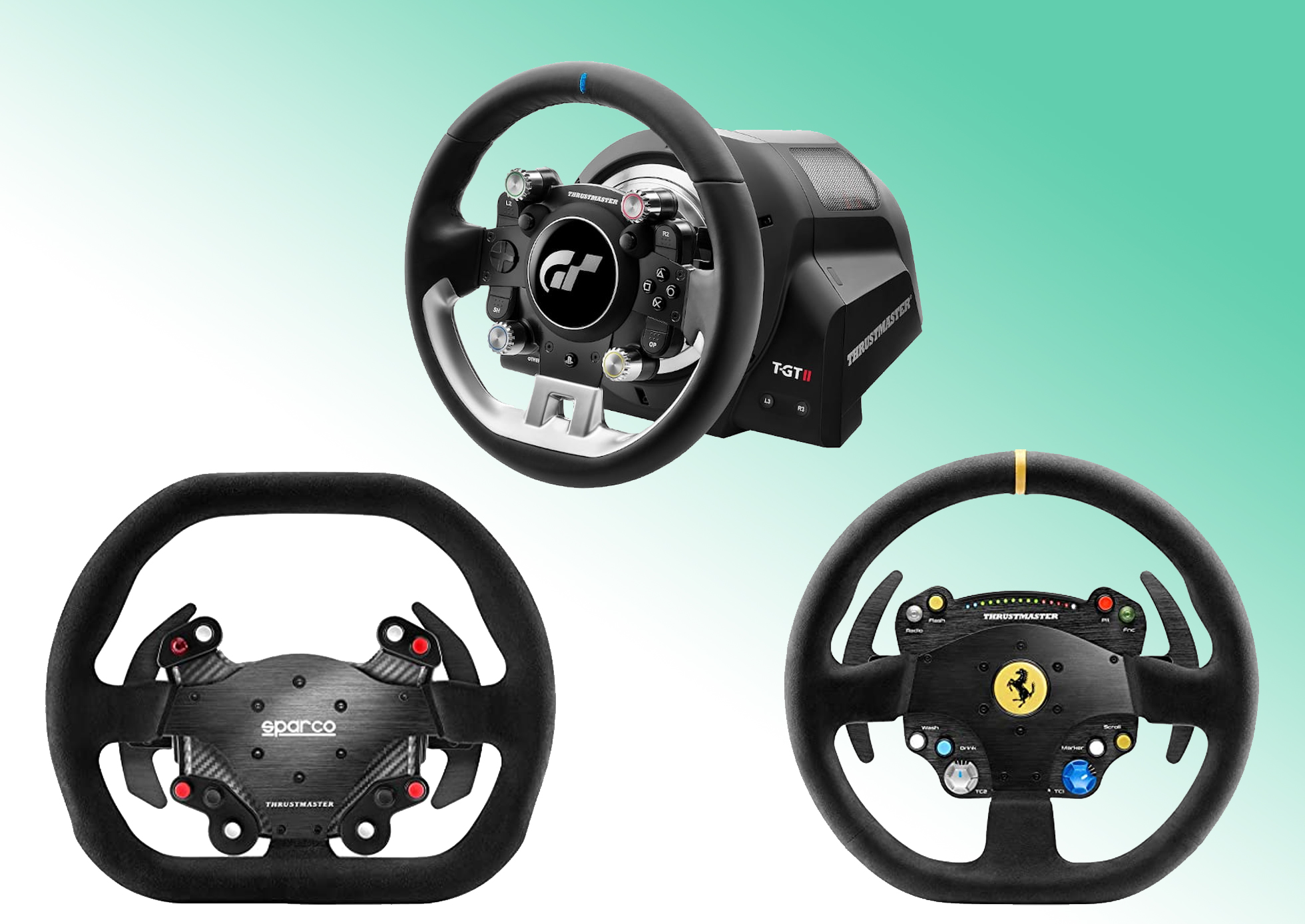
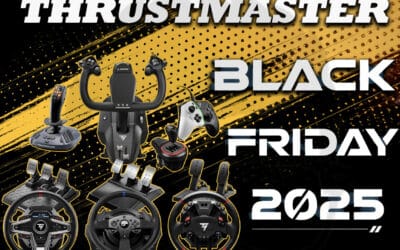
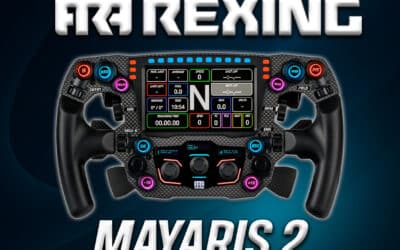
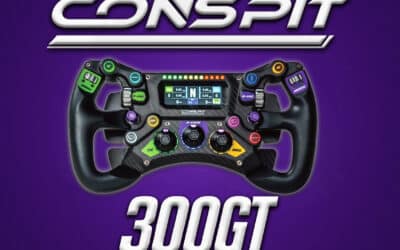
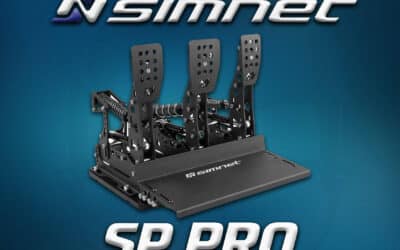
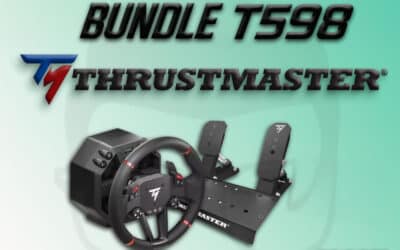
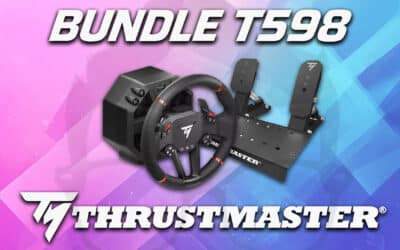
0 Comments